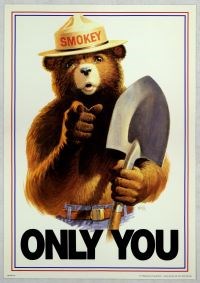
U.S. Department of Agriculture One of the primary goals of the Great Lakes Fire Management Zone team is to provide education about fire safety and the prevention of accidental wildland fires. The zone is comprised of thirteen different parks that each have diverse ecosystems, environmental factors, and different elements of visitor uses. It is important that you review the laws and policies of an individual park before you visit. The National Park Service has many programs in place to study, manage, and respond to different types of fires. Visit the National Park Service's fire website to find information about fire science, preparedness, and the difference between structural fires and wildland fires.
CampfiresCampfires should never be built outside of the designated areas. This will help prevent accidental wildfire and dangerous conditions. The National Park Service provides helpful tips and safety measures to help you build a safe campfire where permitted. Always consult a park's website or speak to a staff member about if and where campfires are permitted prior to your visit. Leave No TracePractice the seven Leave No Trace Principles in order to prevent the possibility of wildfires. Consider using a lightweight stove for cooking and smaller lanterns for light instead of a campfire. Properly dispose of trash that may catch on fire. Leaving areas as you find them minimizes the risk of wildland fires. |
Last updated: August 1, 2020
